calsfoundation@cals.org
Nimrod (Perry County)
Nimrod is a small community located near the Fourche La Fave River in western Perry County. Never a large community, today it is best known for its proximity to recreational Lake Nimrod, the state’s oldest U.S. Army Corps of Engineers–constructed lake, and the Ouachita National Forest.
Fertile soil and the confluence of the Fourche La Fave River with the Arkansas River attracted settlers as early as 1808. However, until the decade preceding the Civil War, most of that settlement centered on the eastern reaches of the river where the town of Perryville (Perry County) was founded. By 1850, James Wilson built the first house at what later became Nimrod. Among other early settlers were the Young, Cherry, James, Cobb, Hill, and Holmes families. A church of unknown denomination was the first in the settlement. It was followed by the Methodist church, constructed on land donated by an early settler named Dr. Holmes. James Cobb established an early cotton gin. Once a settlement began to develop, the name Nimrod, referencing a hunter from the Bible, was reportedly to have been selected by Eliphalet Cole Van Dalseim during the petition for the establishment of a post office. Van Dalseim is said to have then become the first postmaster. However, no post office with the name Nimrod appears in the record for that time. Other sources state that the settlement may have been named by settlers who had migrated from Nimrod Hill, Tennessee.
The Civil War hampered the development of the community, with some local men serving in the Confederate army while others remained loyal serving for the Union. While there were no major battles fought in the area, wandering guerrilla bands caused considerable damage. It took years for the settlement to recover.
Nimrod experienced its greatest growth during the early part of the twentieth century. By 1930, the town had been home to four cotton gins. Lumber was an important industry, with Ed Bailey establishing one of the early sawmills, including a shingle factory. Logs were cut by local citizens and floated down the river to various area sawmills. By the early 1900s, the Fort Smith Lumber Company owned large amounts of land in the western part of the county. Some thirty miles to the east was the Fourche River Lumber Company, the largest employer in the county, until it closed in 1921. Development was enhanced with the construction of the Wallace Bridge over the river in 1909. As of 2011, the bridge is one of only three surviving camelback truss bridges in Arkansas. It was added to the National Register of Historic Places in 2008.
Bailey’s mercantile store was the first in town to have electricity supplied by his own Delco Electric system; Bailey was also the first resident to have telephone service in the early 1900s. Children first attended school in a one-room building called Bertha’s Mountain School located on the south side of town. New school buildings were constructed in 1900 and 1912. During the Great Depression, a native stone school building was built by the federal Works Progress Administration (WPA). The building remained in use until 1951. Nimrod’s school-age children today attend school in Perryville.
Area cotton producers suffered from greatly reduced prices during the Great Depression. By the early 1940s, the town’s last cotton gin had closed. Faced with a declining economy, many area young men were employed at a Civilian Conservation Corps camp located in nearby Thornburg (Perry County). By the 1940s, the town prospered, with electricity being made available to all residents in 1946. A small business district continued to survive through the 1940s and 1950s.
In 1942, the U.S. Army Corps of Engineers completed damming the Fourche La Fave River to help solve the area’s flooding problems. As a result, the 3,550-acre Lake Nimrod, the oldest such manmade lake in the state, was formed. The lake and nearby Ouachita National Forest are major attractions to the area today.
With the decline of the cotton and logging industries, which were the largest employers in the area, commercial businesses began to close and people gradually moved away. Today, most area residents make a living raising livestock and chickens. Little exists of the town other than a few residential homes, a volunteer fire department, and a Baptist church.
For additional information:
Perry County, Arkansas Its Land and People. Perryville, AR: Perry County Historical and Genealogical Society, 2004.
Trower, Kathy. “Community of Nimrod Named for Biblical Hunter.” Arkansas Democrat-Gazette, August 5, 2001, p. 7R.
Womack, Patsy. Living the Times: A Bicentennial History of Perry County. N.p.: 1976.
Mike Polston
CALS Encyclopedia of Arkansas
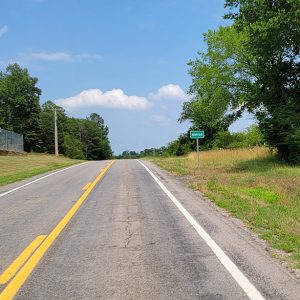 Entering Nimrod
Entering Nimrod 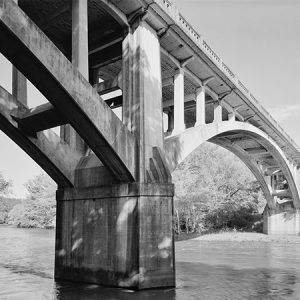 Fourche La Fave Bridge
Fourche La Fave Bridge 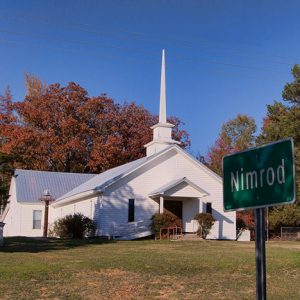 Nimrod Baptist Church
Nimrod Baptist Church 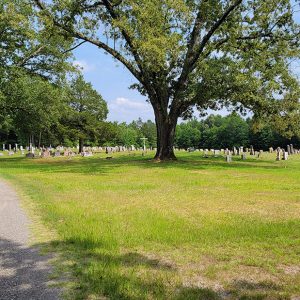 Nimrod Cemetery
Nimrod Cemetery 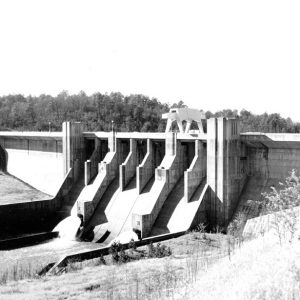 Nimrod Dam
Nimrod Dam 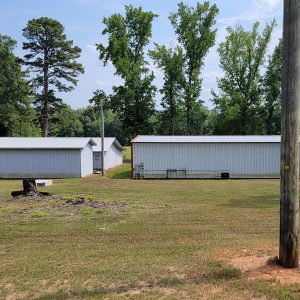 Nimrod Fire Department
Nimrod Fire Department 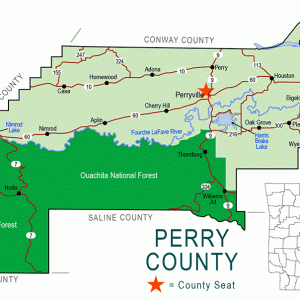 Perry County Map
Perry County Map 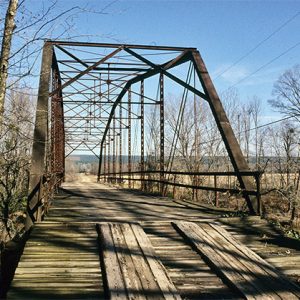 Wallace Bridge
Wallace Bridge 



Comments
No comments on this entry yet.